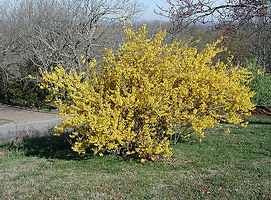
YELLOWSTONE ARBORETUM
" Stewards of the Natural Environment "
Billings, Montana @ ZooMontana
Ancient Trees and A Place for Meditation

"The Ginkgo"
Ginkgos enjoy the distinction of being the only surviving species of the Ginkgo family. These trees are incredibly robust, resisting damage from cold, wind, pests, and disease. On top of all that, they are gorgeous. These trees can live for thousands of years, reach impressive sizes, have unique fan-shaped leaves, and display breathtaking fall color.
Ginkgo (Ginkgo biloba) is the only remaining species in the genus Ginkgo, and the only genus in the family Ginkgoaceae (with evidence of six other genera existing in the past). Ginkgos were thought to be extinct in the wild until two small populations were found in eastern China.
Ginkgos are very long-lived trees and some specimens in China are more than 2,500 years old. Their resistance to pests, as well as heat, has made these trees popular for urban situations and they are one of the best-suited trees for city streets. Their fan-shaped leaves are unique among seed plants and turn bright yellow in fall before dropping to carpet the ground. This bright yellow makes a beautiful contrast with neighboring trees of any color, be it an evergreen or the vibrant red of a maple
Here in the Asian Garden of the Yellowstone Arboretum you can find the mystical next to a place of quiet solitude. The Ginkgo and Dawn Redwood represent two of the oldest species on the planet, both planted in 2018. Next to the garden is the Millennium Grove, planted in 1999, encompassing a circle of Black Hills Spruce. All are unique additions to the Asian Habitats
"Chinese Dawn Redwood"
The dawn redwood was once one of the most widespread tree species in the Northern Hemisphere (during the Tertiary period). Scientists had identified fossil remains of this redwood in North America, Asia and Greenland and had concluded that it must have been extinct for millions of years. However, in 1944, a Chinese forester found an enormous dawn redwood in the Sichuan province of China. In 1948, a small group traveled to south-central China and found a few thousand of the trees growing in lowland canyons. Villagers in the Sichuan region were using the foliage for cattle fodder and the wood for bridges and other construction. The dawn redwood tree, thought to have been extinct for 20 million years, now had living representatives known to the world.
Biology
Dawn redwoods’ colorful leaves are one trait that separates this species from its family members. The only living species in its genus, the dawn redwood is a deciduous tree rather than an evergreen. This means that it sheds its leaves in the fall, is bare in winter and grows new leaves in the spring. It is also the smallest of the three redwoods: dawn redwoods are typically between 50 and 60 feet tall, but can grow taller than 160 feet with a trunk about 7 feet in diameter. It is considered a fast-growing tree and is often planted as an ornamental.
Conservation
Today you can see naturally occurring populations of dawn redwoods in various locations in China, including the hills and wetlands of Hubei’s Lichuan County and the Hunan Province. In the United States, you can find 200 dawn redwoods at the Crescent Ridge Dawn Redwoods Preserve (CRDRP) in North Carolina, and at botanical gardens. Dawn redwoods have also been planted in Japan, near schools, museums and temples.
The dawn redwood is commonly known as “water-fir” or “water pine” in China because of its tendency to grow in low-lying areas near rivers and streams—the same conditions that support rice cultivation.


"Millenium Grove"
This small grove of Black Hills Spruce was planted in celebration of the Billings 2000 events by Dwayne Bondy. It represents probably the most concentrated collection of this species in the region. It's a meditation circle and once inside the sounds of everyday life disappear and the soothing voices of nature take over. The "Earthpole" in the center will remind the visitor of their exact position in life !
Picea glauca, the white spruce, is a species of spruce native to the northern temperate and boreal forests in North America. Picea glauca was originally native from central Alaska all through the east, across southern/central Canada to the Avalon Peninsula in Newfoundland. It now has become naturalized southward into the far northern United States border states like Montana, Minnesota, Wisconsin, Michigan, Vermont, New Hampshire and Maine; there is also an isolated population in the Black Hills of South Dakota and Wyoming. It is also known as Canadian spruce, skunk spruce, cat spruce, Black Hills spruce, western white spruce, Alberta white spruce, and Porsild spruce.





"Also Found in the Millennium Gove"


Malus "Donald Wyman"
Family: Rosaceae
Origin: Unknown
Common name: Donald Wyman Crabapple
Location: Entrance to Millenium Grove
Number in accession: 1
Note: Prolific bloomer-blooms remain longer in Spring


Forsythia x 'Meadowlark'
Family: Oleaceae
Origin: F.ovata x F.europaea
Common name: Meadowlark Forsythia
Location: Entrance to Millenium Grove, south of Wolverines along path
Number in accession: 2
Note: Scheduled for late winter pruning 2019